After a long tiring day in Gallipoli, we woke up early the next morning and checked out from our hotel in Çanakkale to head for the archeological site of Troy.
If you are surprised that the famous ancient city of Troy is in Turkey, you are not the only one. A history lover, I was astounded and excited to visit the city made famous by Homer’s Iliad and Odyssey.
Even though the weather forecast showed a clear and warm day, it turned out to be a fiercely cold and windy day.
Once we reached the site, our guide Ahmed gathered us and prepared us for what we were about to see.
“You all know the story of Helen of Troy and the Trojan horse,” he said. “But you perhaps don’t know that Troy is a 5000-year-old city and was resettled nine times. The excavation shows nine levels of construction of rock and mud-brick walls, built one upon another, making it really confusing to understand which part belongs to which era.”

He continued, “Just to give a context to how old the city was, the story of Helen and the Trojan horse happened during the sixth settlement of the city.”

It was a massive site. We walked around for more than two hours, witnessing the remains of once a prosperous and important city by the harbor. Many archeologists believe that the city lost its significance when the sea receded. But, there was a time; the harbor was right next to the walled city. We could see from the highest point at the site that the ocean was quite far away.
Troy is not only famous for its nine meters high wall but also for its ingenious architecture for collecting and distributing water and heavy war machinery.
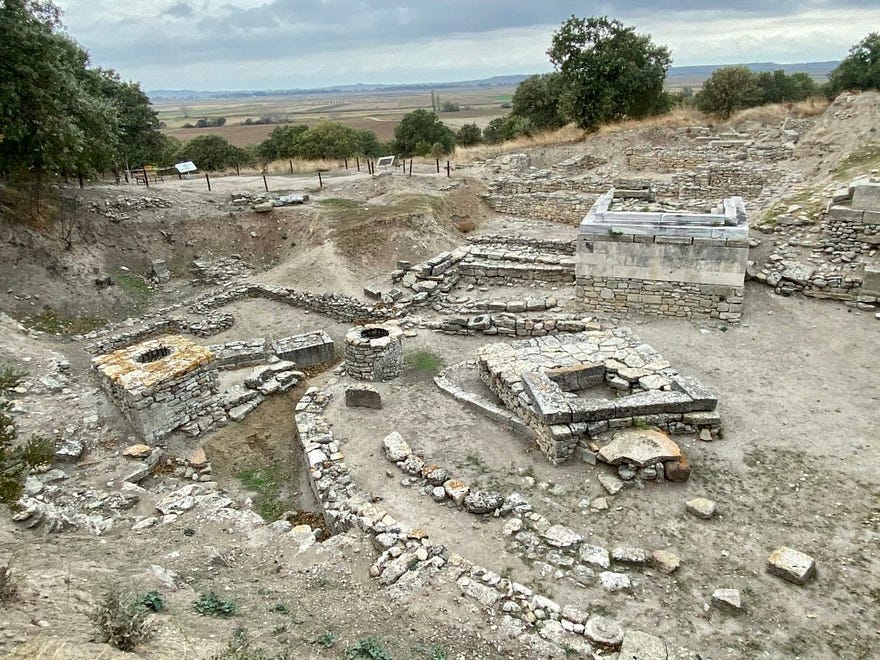
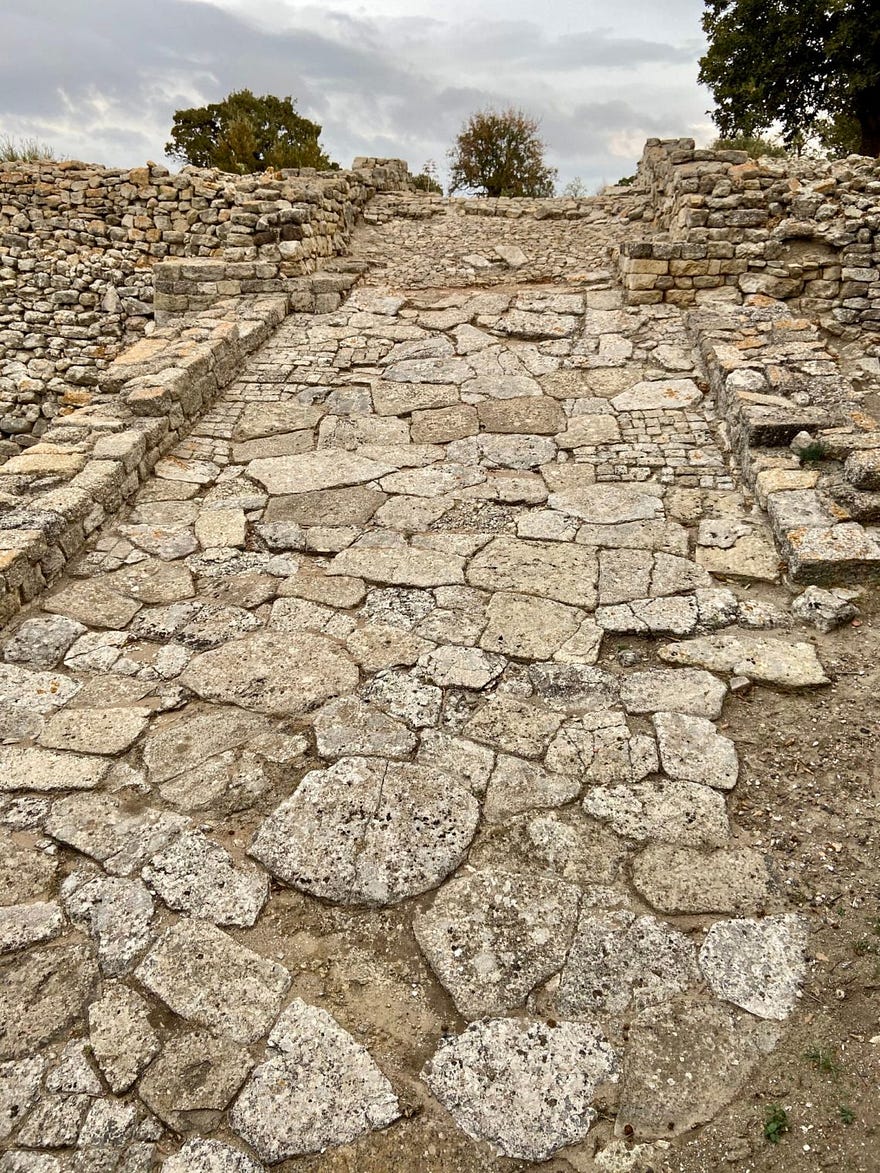
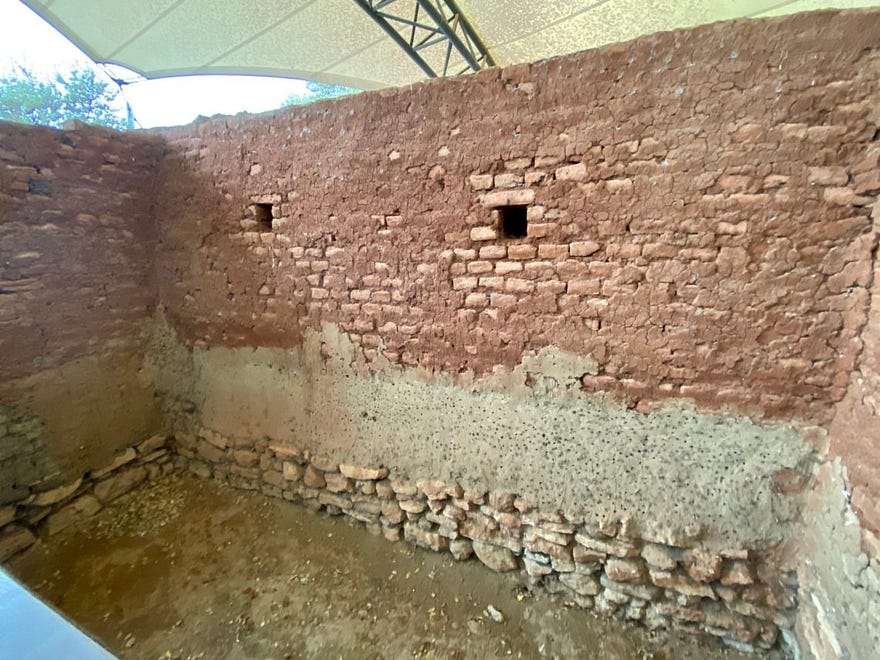
Interesting Story about the discovery of Troy
For a long time, the city of Troy was believed to be a mythical city until a German treasure hunter found it with the help of locals.
Even when he was a child, Heinrich Schliemann was fascinated by the story of wooden horses and soldiers hiding in it. He believed that if the Trojan war really happened, the people wouldn’t have had the chance to move the treasury. Since the Greeks didn’t find any treasure, that means it was still there somewhere. His persistence paid off. He found the city of Troy but no treasure.
Schliemann did find some gold jewelry but not from the Helen of Troy period but 1200 years before that.
Treasures discovered from the site are now in nine different museums globally, including the St Petersburg of Russia.
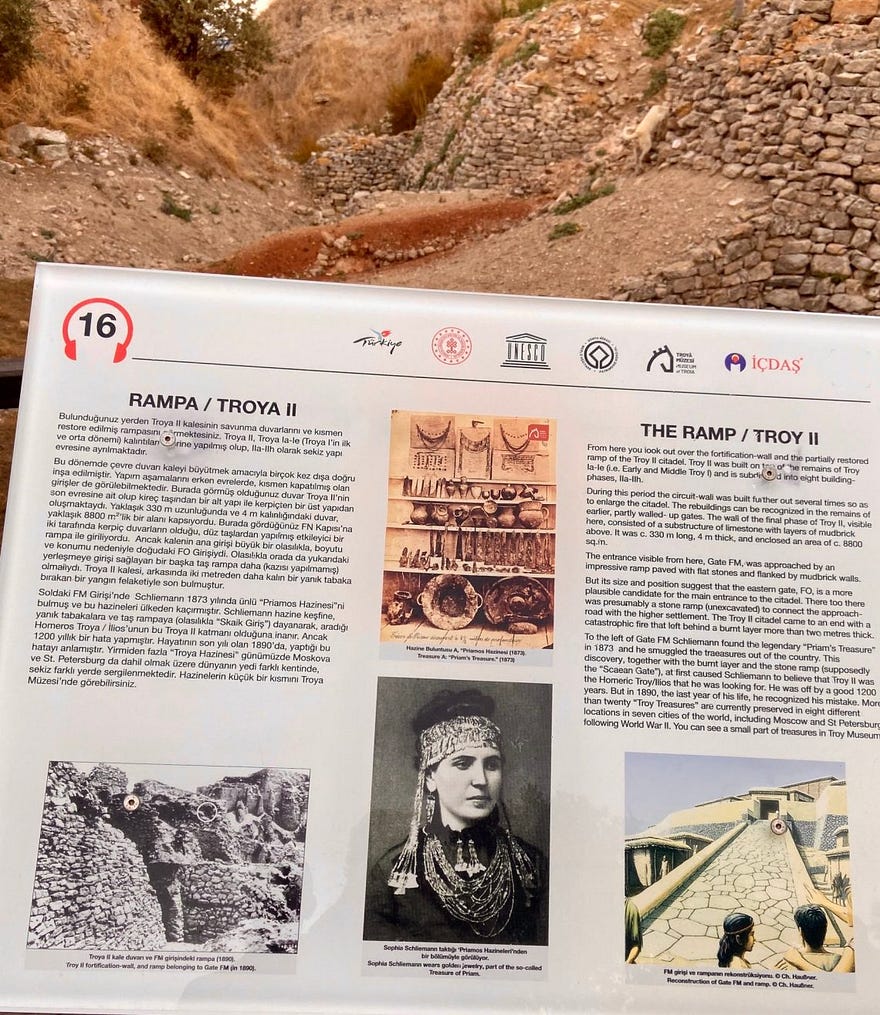
While researching for this article., I found another interesting fact—this time about the lady in the signpost.
When Schliemann decided to search for Troy, he realized that he would need a personal assistant with knowledge of Greek history and culture. He even put an advert that he was looking for a wife in an Athenian newspaper. His bride was a relative of the Archbishop of Athens. Her name was Sophia Engastromenos, and when 47-year-old Schliemann married her, she was only 17. Her best-known photo shows her wearing the ancient treasures discovered by Schliemann at Troy. The marriage had three children with highly symbolic names: Andromache, Troy, and Agamemnon.
Source: Turkish Archeological News
Trojan Horse
There was a large model wooden horse to imitate the famous Trojan Horse on the way out from the site. It didn’t look authentic, but it was fun to go inside and have your photo taken from outside.

Drive to Pergamon
Pergamon was a place where Greek and Turkish lived side by side for centuries. Only recently the final exchange of people happened between two countries.
The drive from Çanakkale to Pergamon was scenic, to say the least. On the right-hand side was the Aegean Sea, while on the left was the mountain range covered with native olive trees.
The Olive trees are to the Mediterranean like the Eucalyptus trees are to Australia. They grow by themselves. Their average life span is 400 to 500 years. Did you know that the oldest tree in the world is an olive tree that is 2000 years old?
The trees are kept fresh by cutting off the top and grafting it with a younger tree.
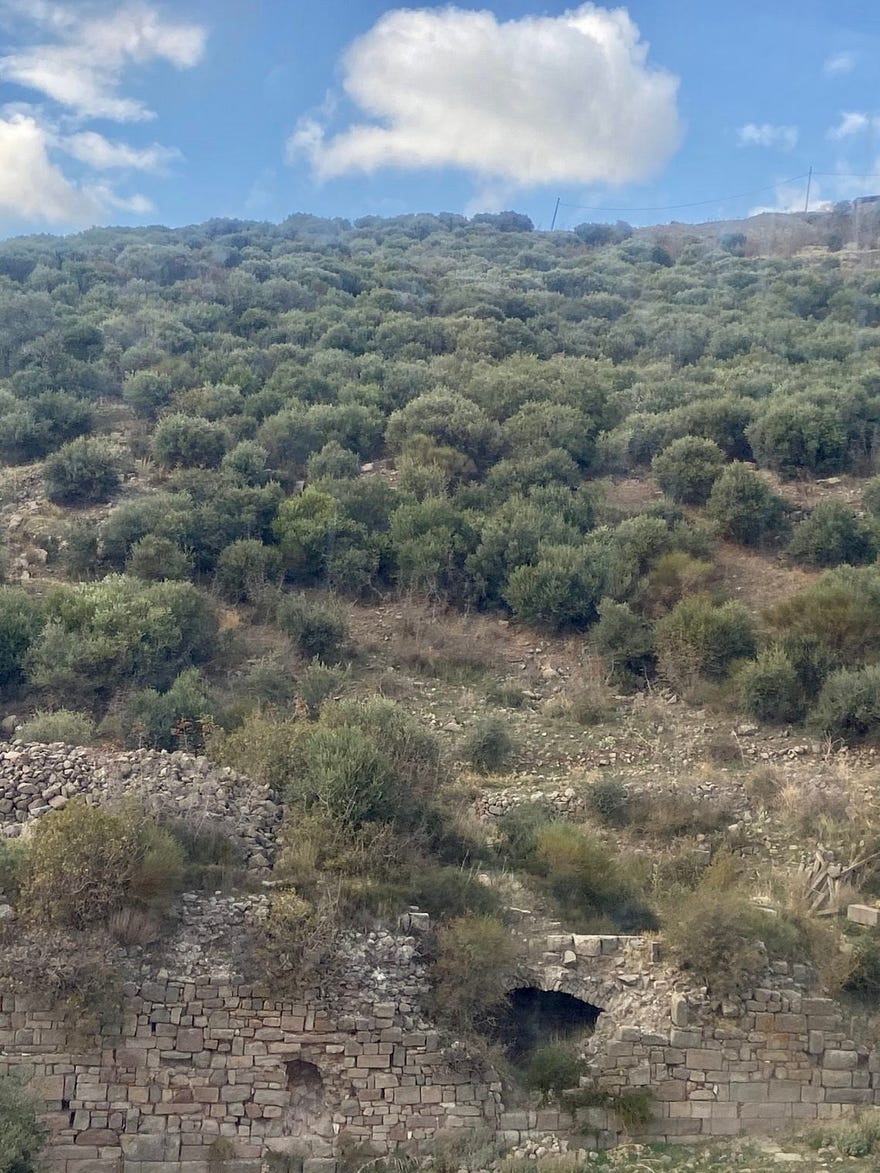
The northwest region of Turkey, known as Anatolia, is the summer destination for Turkish people. Small towns peppered the whole area with holiday houses owned by rich and middle-class Turkish families. These houses are occupied just for three months of the year. It is quite common for the older middle class of Turkey to own two houses, a primary home and a summer house or a village house.
We also crossed a number of cotton fields. The textile industry is providing a livelihood to many people, and Turkish cotton is quite sought after.
Acropolis of Pergamon
After lunch, we drove to Pergamon Hill to visit Acropolis, a Greek city established by one of the generals of Alexander the Great. It is 2200 years old city and is a bit better preserved than Troy.
Pergamon’s ancient name was ‘Pergamos’ which means “people of the high city.” It is situated on a hill, and we reached there through a cable car.
With its impressive temples and library Acropolis was a big cultural hub in its heydays. Its library was the second largest in the world after Alexandria.
We learned Mark Antony gave Cleopatra a substantial number of volumes from the Pergamon library to replace those destroyed by the fire at Alexandria Library, quite possibly because the fire that consumed the library was started on orders by Julius Caesar to burn his own ships in Alexandria harbor as a tactical ploy.
Walking through the ruins makes history come alive. All those historical figures (Helen of Troy, Mark Antony, Cleopatra), which I thought were just legends, were real people who lived in cities and houses just like we do now. It made me appreciate how our actions are judged even thousands of years later.
And our creations survive much longer than us. Look at this beautiful archway at the citadel. Unlike today, people made things to last in those days.
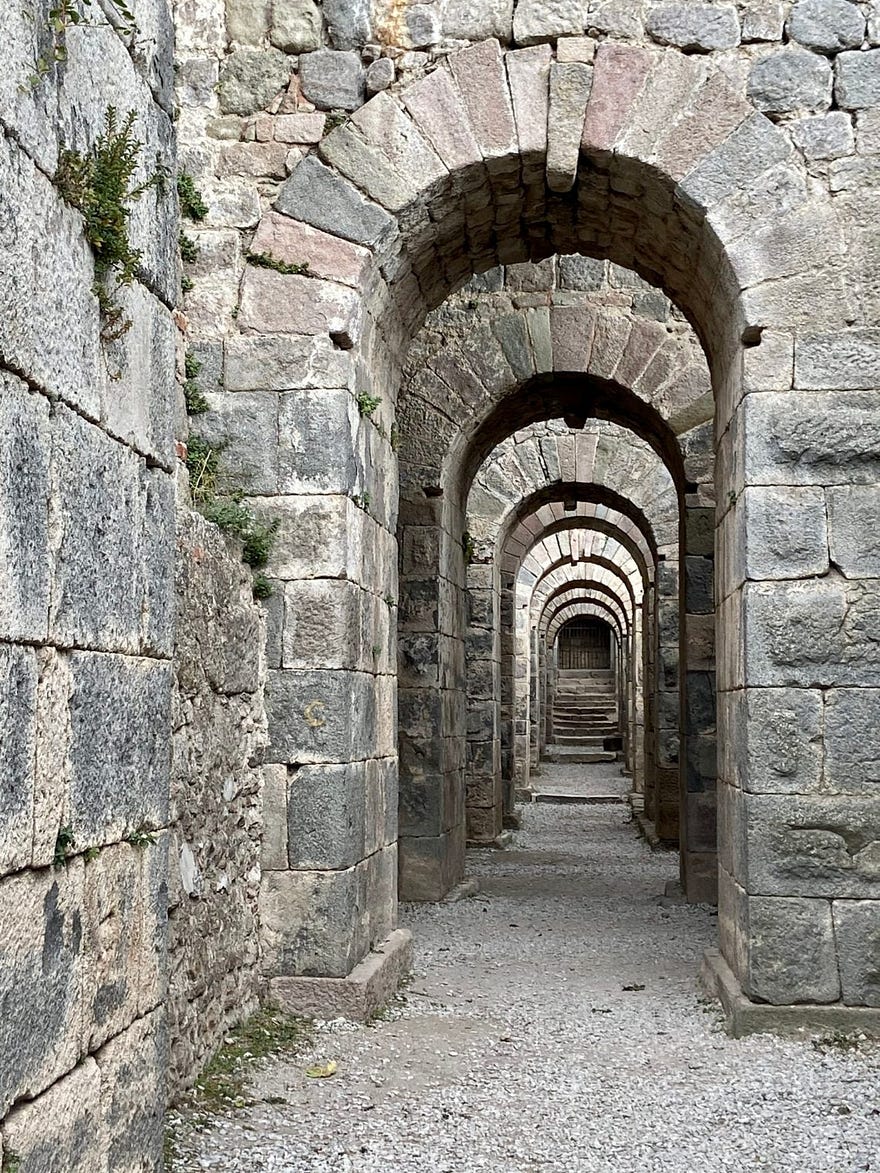
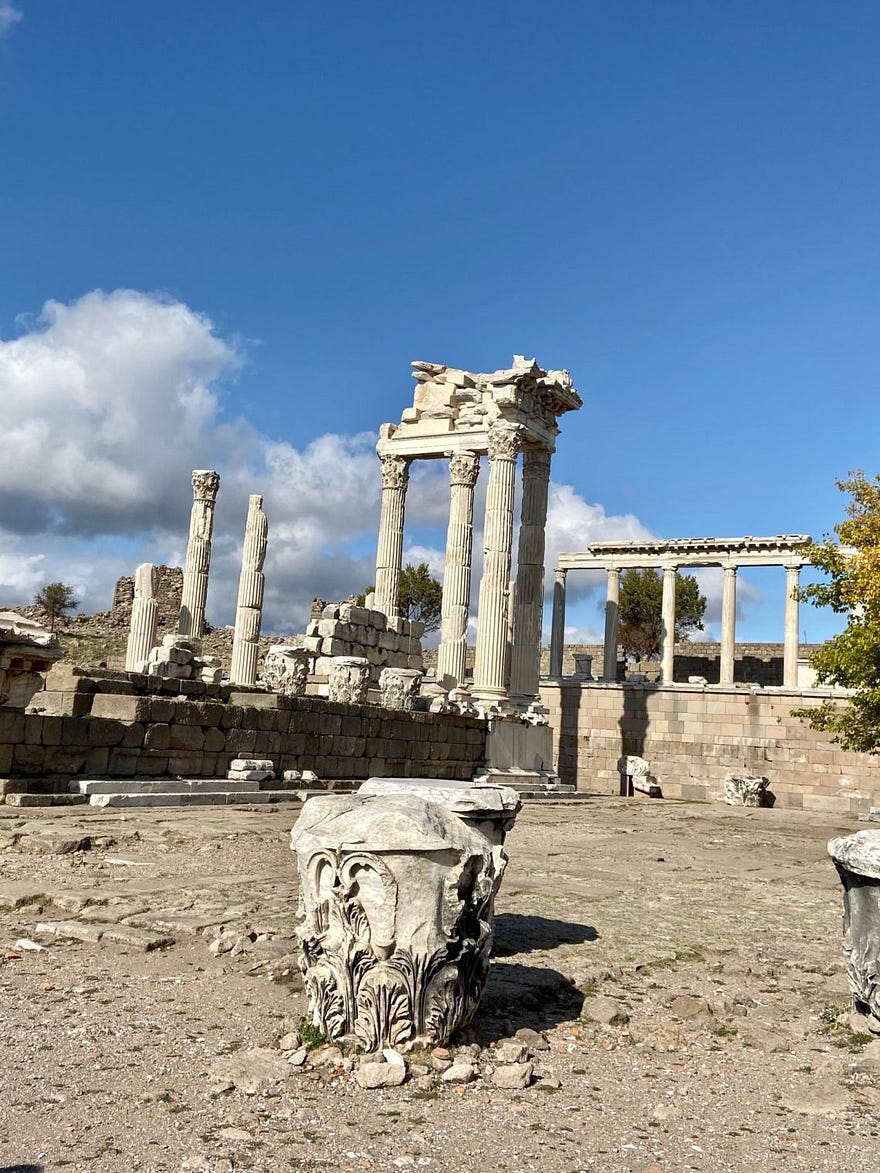

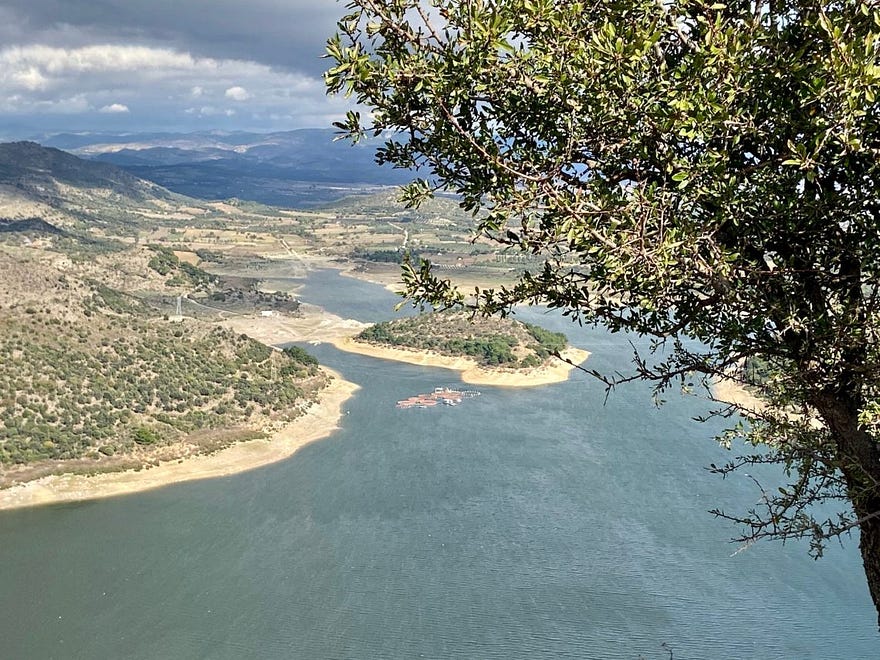
The acropolis is surrounded by water but to get it uphill. The inhabitants used ingenious ways. They made aqueducts and used the force of water to bring it to the acropolis.
After the death of the last Greek general, Pergamon was passed on to Romans without any conflict. However, Romans didn’t like its location. Mainly because Pergamon was not a harbor city. Roman slowly abandoned Pergamon and moved to Ephesus.
I loved visiting both the sites. But I didn’t know a bigger treat awaited me the next day. We were going to visit Ephesus.